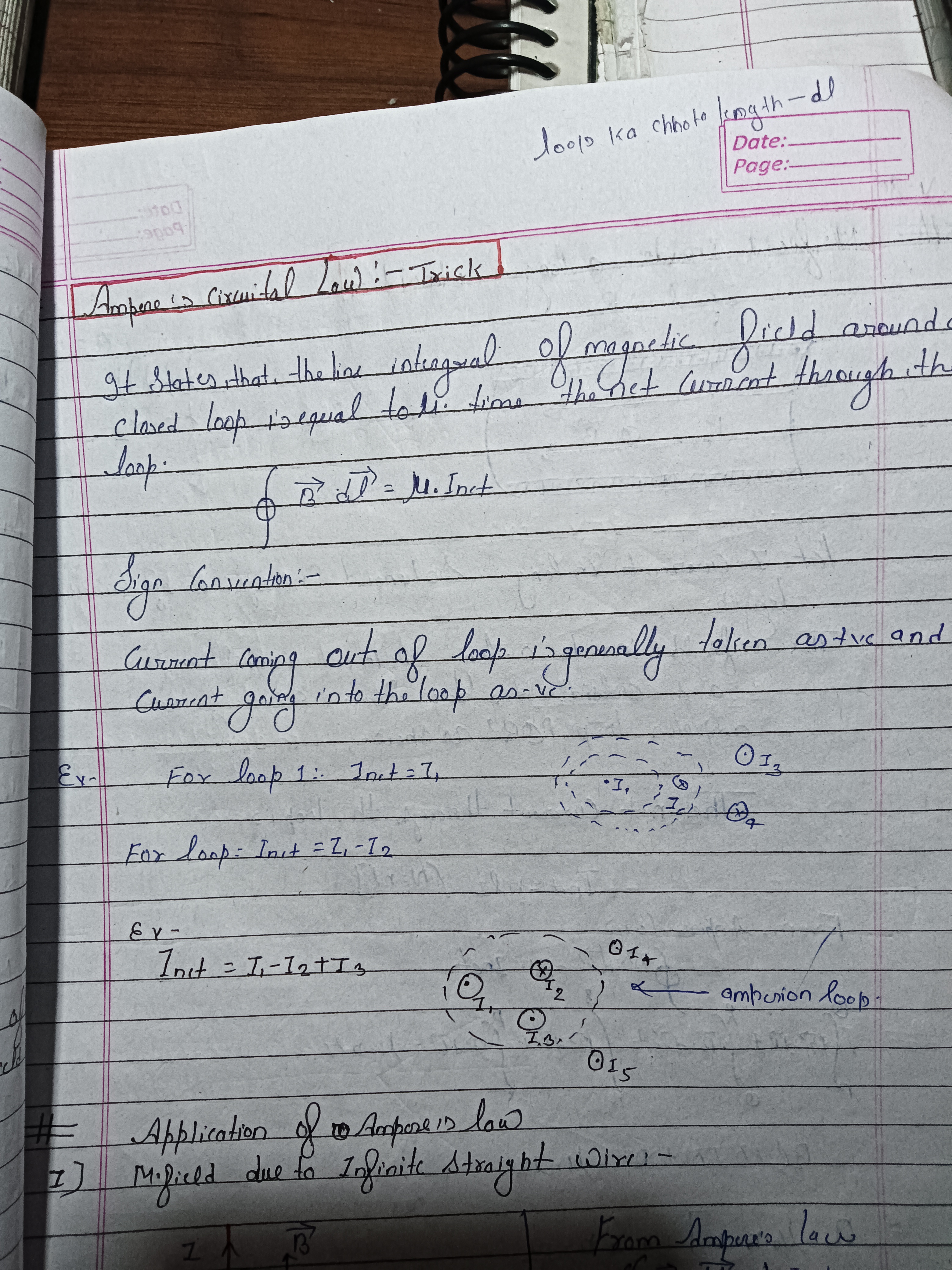What is Ampere's Circuital Law and how is it applied to current loops?

Understand the Problem
The question is related to Ampere's Circuital Law, which describes the relationship between the magnetic field around a closed loop and the current passing through the loop. It involves understanding the integral of the magnetic field and applying sign conventions in calculations.
Answer
Ampere's Circuital Law relates the magnetic field line integral to the net current through the loop: ∮ B·dℓ = μ₀ I_net.
Ampere's Circuital Law states that the line integral of the magnetic field around a closed loop equals μ₀ times the net current passing through the loop. For current loops, the direction of current affects its sign (out of the loop is positive, into the loop is negative).
Answer for screen readers
Ampere's Circuital Law states that the line integral of the magnetic field around a closed loop equals μ₀ times the net current passing through the loop. For current loops, the direction of current affects its sign (out of the loop is positive, into the loop is negative).
More Information
Ampere's Law is significant in electromagnetism, forming a base for understanding magnetic fields around current-carrying conductors. Its application to symmetrical situations, like solenoids and toroids, enables easier calculation of the magnetic field.
Tips
A common mistake is neglecting the sign of current based on its direction relative to the loop, which affects the net current calculation.
Sources
- Ampere's Law - Physics LibreTexts - phys.libretexts.org
- Ampere's Circuital Law - Khan Academy - khanacademy.org
- Ampère's circuital law - Wikipedia - en.wikipedia.org
AI-generated content may contain errors. Please verify critical information